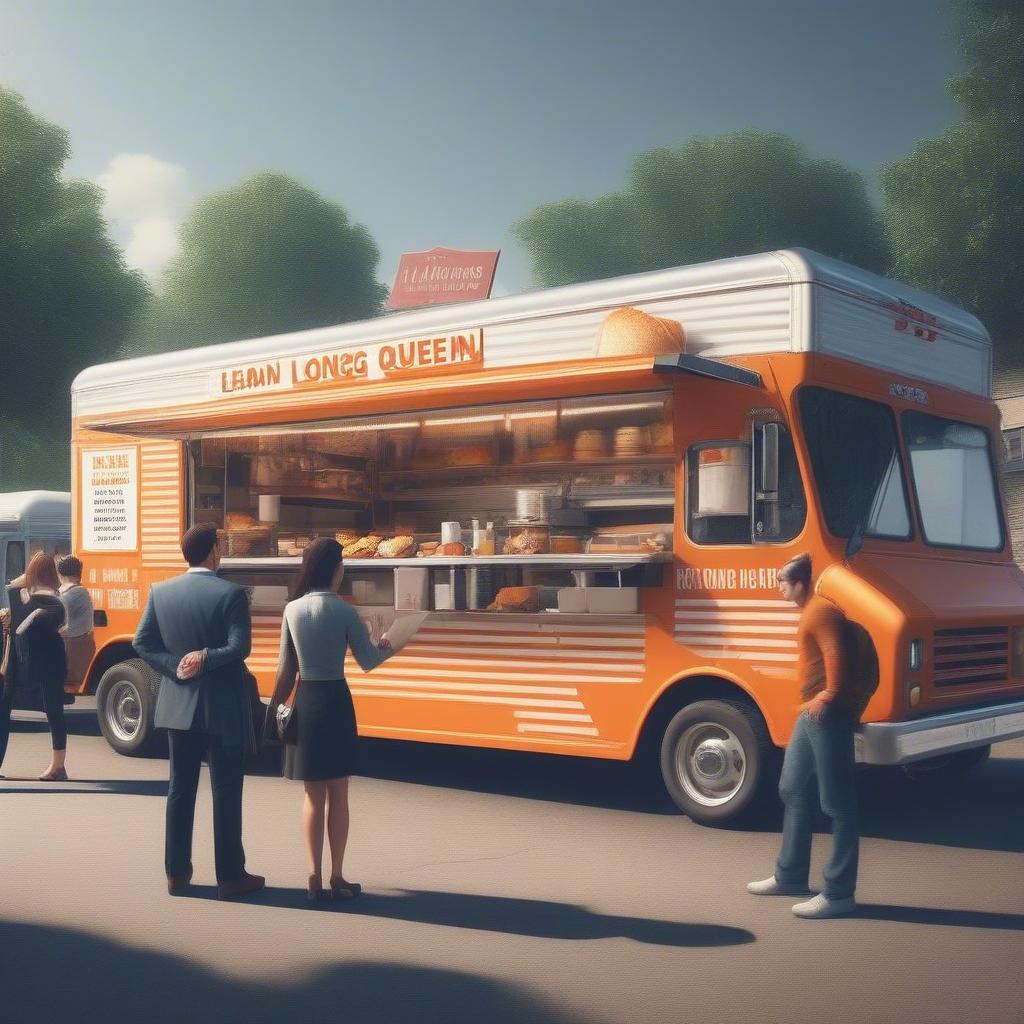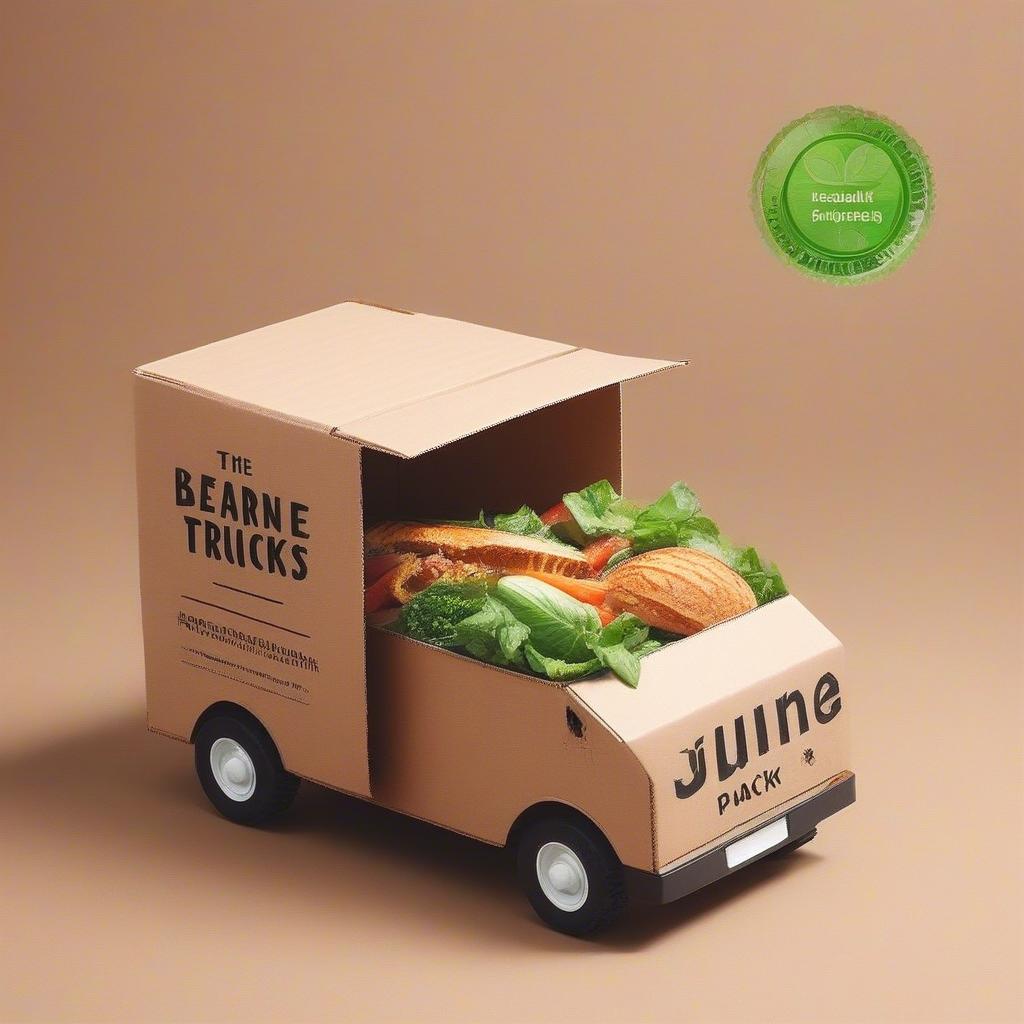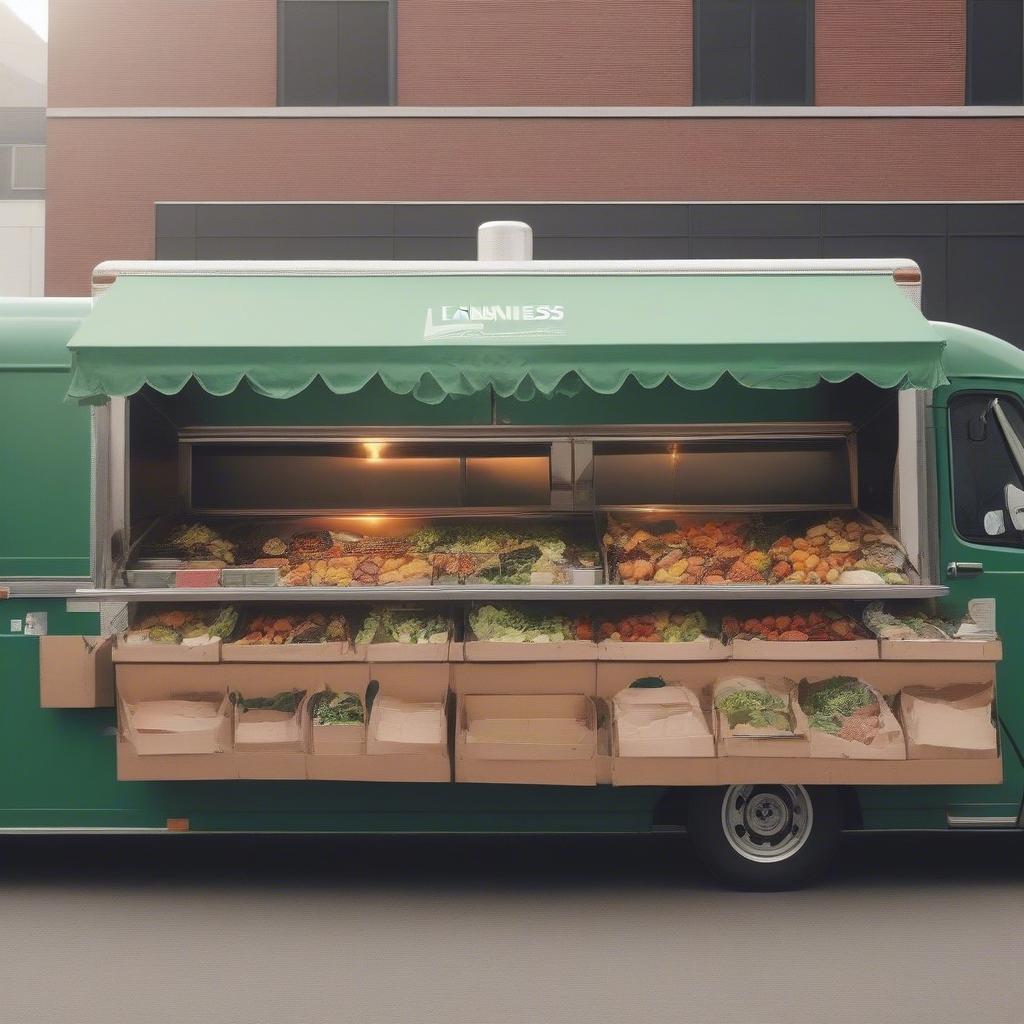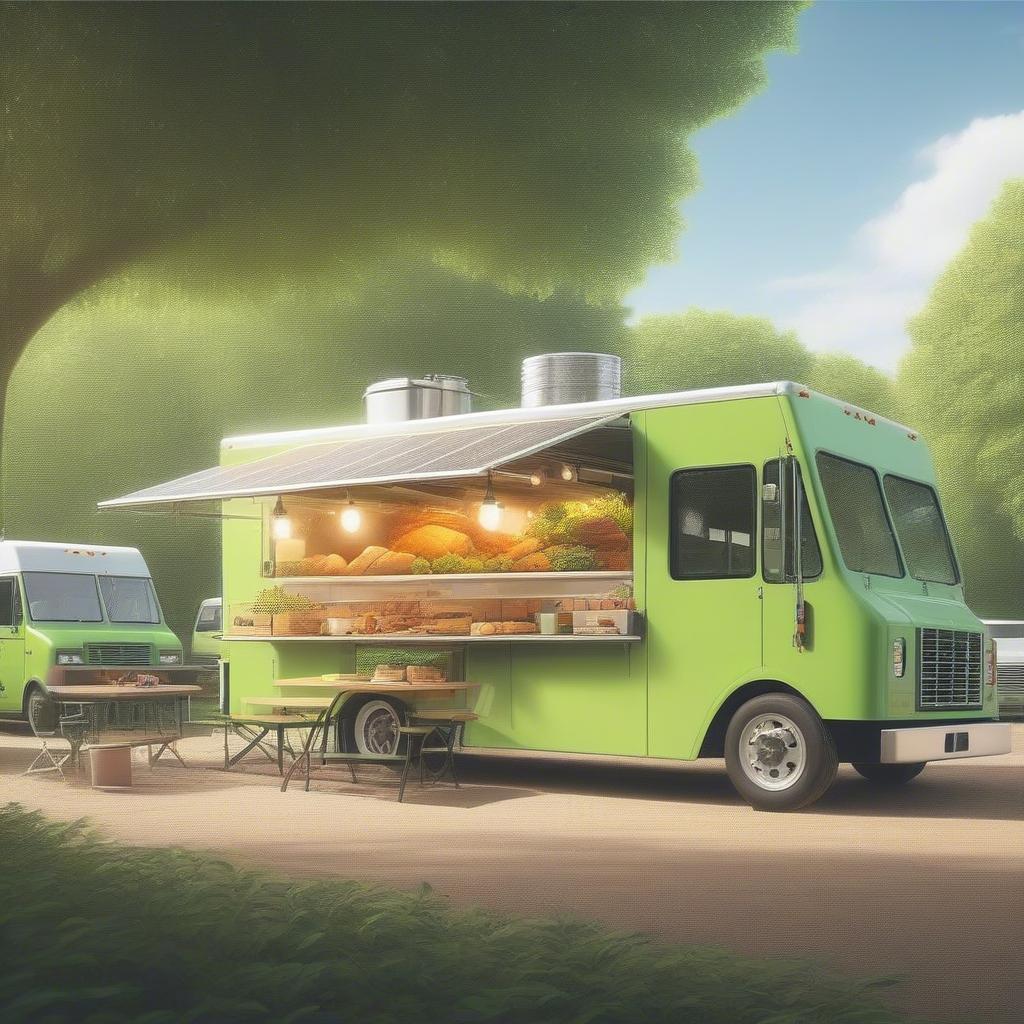
Long lines at your food truck? While it might seem like a good problem to have, a perpetually snaking queue can actually deter customers, leading to lost sales and a tarnished reputation. Effectively managing those hungry hordes is crucial for the long-term success of your mobile culinary venture. This article delves deep into the art of queue management specifically tailored for food truck businesses, offering actionable food truck tips and strategies to not only reduce wait times but also improve customer service and overall profitability.
Why Are Long Queues a Problem?
Before we jump into solutions, let’s understand why long queues are detrimental to your food truck. It’s not just about frustrated customers; the implications are far-reaching:
Lost Sales
Long wait times directly translate to lost sales. Potential customers, especially those on their lunch break or with limited time, will often choose a shorter line – even if the food isn’t their first preference. They might simply move on to another vendor or settle for a less satisfying option. This represents immediate lost revenue and potential repeat business.
Negative Customer Experience
Standing in line, especially for extended periods, is rarely a pleasant experience. Frustration can easily build, leaving customers with a negative impression of your brand. This negative experience can outweigh even the most delicious food. Word-of-mouth, both online and offline, can be significantly impacted by poor queue management, leading to long-term damage.
Impact on Staff Morale
Long queues can be equally stressful for your staff. The pressure to quickly serve a constantly growing line can lead to rushed work, increased errors, and burnout. A stressed team is less likely to provide positive interactions with customers, further contributing to a negative experience.
Safety Concerns
In particularly crowded situations, long queues can pose safety risks. Overcrowding can lead to accidental bumps and jostles, especially in tight spaces. It’s essential to ensure the queue is organized and controlled to prevent potential accidents or issues.
Reduced Efficiency
Even if the line does eventually get served, the overall efficiency of your operation suffers when long queues are the norm. Instead of smoothly flowing through orders, your team is constantly battling the backlog, leading to inefficiencies in preparation and delivery.
Understanding the Root Cause of Long Queues
To effectively address the problem, you need to understand why the queues are forming in the first place. Here are some common reasons:
Slow Order Taking Process
A slow or inefficient order-taking process is a major contributor to long queues. This could be due to:
- Inefficient POS System: Outdated or slow point-of-sale systems can significantly slow down the process.
- Complex Menu: A menu with too many options can lead to customer indecision and longer order times.
- Lack of Training: Staff members not being well-versed in taking orders quickly and accurately can be a bottleneck.
Preparation Delays
Delays in food preparation are another major factor that causes queues to build up:
- Limited Equipment: Insufficient cooking equipment may lead to long wait times during peak hours.
- Lack of Preparation: Not having ingredients prepped and ready to go can significantly slow down the process.
- Unorganized Kitchen: A disorganized kitchen can lead to mistakes and delays in order preparation.
Inadequate Staffing
Insufficient staff during peak hours can significantly impact the flow of service:
- Not Enough Order Takers: A shortage of staff to take orders means the queue will continue to grow.
- Insufficient Cooking Staff: Even with fast order taking, a shortage of cooking staff can lead to order delays.
- Lack of Support Staff: Not having staff to help with tasks such as stocking and cleaning can slow everything down.
Poor Queue Management Design
The way you organize your physical queue can also contribute to long waits:
- Lack of Clear Signage: Customers unsure where to line up or how to order add to confusion.
- Unclear Ordering Process: Not explaining the ordering process clearly creates confusion and delays.
- Lack of Physical Space: Cramped queues can be uncomfortable and slow movement.
High Demand
Sometimes, queues are simply the result of high demand for your product:
- Successful Promotion: Successful marketing campaigns can quickly lead to more customers than you can immediately handle.
- Popular Menu Items: Certain popular menu items may cause a bottleneck if they take longer to prepare.
- Location Popularity: A prime location can lead to higher traffic and longer queues.
Strategies for Effective Queue Management
Now that we understand the “why,” let’s move on to the “how.” Here are practical and actionable strategies for effective queue management at your food truck:
Optimizing the Order Taking Process
1. Streamline Your Menu
- Simplify: Offer a focused menu with fewer options. A smaller menu means less decision fatigue for customers and easier preparation for your staff.
- Feature Specials: Introduce daily or weekly specials to reduce the overall menu complexity and encourage faster decision-making.
- Menu Boards: Utilize clear, concise, and easy-to-read menu boards with large fonts and clear pricing.
- Digital Menus: Consider using digital menus or QR codes that customers can scan on their phones, which can minimize customer indecision at the window.
2. Invest in a Reliable POS System
- Fast & Efficient: Choose a POS system designed for mobile food businesses with fast order processing.
- Mobile Integration: Select a system that integrates with mobile payment options to speed up transactions.
- Order Tracking: A POS system that tracks order preparation times can help you identify bottlenecks.
- Inventory Management: A robust system can also help manage inventory and prevent ingredient shortages.
3. Master Fast Order Taking Techniques
- Train Your Staff: Invest in proper training for all staff on how to take orders efficiently and accurately.
- Upselling Techniques: Equip your staff with short and effective upselling scripts to maximize revenue during busy times.
- Practice Speed: Encourage practice to improve speed and precision when taking orders during practice and slower periods.
- Repeat Orders: Ask staff to repeat orders back to customers to minimize errors and further delays.
4. Implement Pre-ordering and Online Ordering
- Online Ordering Platform: Partner with a reliable online ordering platform. This allows customers to place orders in advance and skip the line.
- Mobile Apps: Explore creating a branded mobile app for your food truck. This allows loyal customers to easily order and reorder.
- Scheduled Pick-up: Offer scheduled pick-up times, allowing your kitchen to stagger order preparation and reduce queue congestion.
- Benefits: Pre-ordering and online options will significantly reduce lines during peak times and can expand your customer base beyond immediate location.
Accelerating Food Preparation
5. Optimize Kitchen Layout
- Efficient Workflow: Design your food truck’s kitchen with an efficient workflow in mind. Place equipment and ingredients where they’re most accessible.
- Separate Stations: Create designated stations for different food prep tasks. This will help streamline the preparation and prevent bottlenecks.
- Regular Check-ups: Periodically evaluate your kitchen layout and make adjustments for improved efficiency as needed.
- Minimize Movement: Focus on how your team moves throughout the truck, and look to minimize unnecessary steps to help save time.
6. Prioritize Ingredient Preparation
- Mise en Place: Prepare all ingredients ahead of time, during the slower periods. This includes chopping vegetables, cooking proteins, and making sauces.
- Batch Prep: Cook ingredients in large batches to save time during service. This is especially helpful during peak times and busy periods.
- Storage Solutions: Invest in efficient storage solutions to keep prepared ingredients fresh and easily accessible.
- Inventory Management: Keep a close eye on your inventory and ensure all necessary ingredients are always available.
7. Invest in the Right Equipment
- High-Capacity Equipment: Invest in high-capacity cooking equipment that can handle peak demand. This includes grills, fryers, and ovens.
- High-Quality Equipment: Use quality equipment that is easy to clean and use. Reliable equipment minimizes breakdowns and service interruptions.
- Regular Maintenance: Ensure your cooking equipment is regularly maintained to prevent breakdowns and maximize efficiency.
- Technological Innovations: Explore the latest technology to see how it might boost speed and quality.
8. Standardize Recipe Processes
- Precise Recipes: Create detailed recipes with specific measurements and instructions. Standardization minimizes errors and ensures consistent quality.
- Training: Ensure all staff members are well-trained on all recipes and preparation processes.
- Clear Instructions: Post clear instructions for each recipe, in a readily available format to ensure staff has access to instructions when needed.
- Practice Makes Perfect: Practice these standardized recipes so staff knows them very well. This can boost production speed and quality.
Managing the Physical Queue
9. Create a Clear Queueing System
- Designated Line: Create a clearly marked line for customers to wait in. Use rope barriers or stanchions to help manage the flow of customers.
- Clear Signage: Implement signs that indicate where to order, pick up food, and the location of the end of the queue.
- Directional Arrows: Use directional arrows to guide customers and minimize confusion.
- Visual Appeal: Keep the queue area clean and visually appealing. This makes the wait less unpleasant for customers.
10. Provide Entertainment While Waiting
- Music: Play upbeat and enjoyable music to keep customers entertained.
- Menu Boards/Screens: Use menu boards or screens to display menu items and updates while customers are waiting.
- Informational Signage: Post information about your food truck, your story, or interesting facts about your dishes.
- Social Media: Promote your social media and encourage customers to share their experience online.
11. Implement a Number System
- Numbered Tickets: Consider implementing a numbered ticket system, especially during peak periods.
- Electronic Systems: There are electronic number systems that can help customers see how long they may have to wait and also show their place in line.
- Flexibility: This system gives more flexibility and allows customers to check out their environment while they wait.
- Avoid Bunching: A number system can reduce bunching and prevent overcrowding in your service area.
12. Optimize Physical Space
- Wider Queues: Ensure that your queues are wide enough to allow customers to move comfortably.
- Minimize Obstacles: Remove any obstacles that might slow down movement in the queue.
- Use The Space: Utilize the space around your food truck to organize your physical queue.
- Plan Ahead: Think about how long you might expect the queue to be and plan how to utilize the surrounding space.
Improving Customer Service
13. Engage with Your Customers
- Friendly Greetings: Ensure that your staff greets each customer with a smile and friendly welcome.
- Personal Interactions: Engage in short, personal conversations with customers while taking their orders.
- Show Appreciation: Express your gratitude to customers for waiting in line.
- Train Staff: Teach staff active listening and make sure they understand the importance of great customer service.
14. Proactive Communication
- Wait Time Estimates: Provide estimated wait times and keep customers updated on their order status.
- Transparency: If delays occur, be transparent and provide a reason for the delay.
- Manage Expectations: Manage customer expectations by telling them about menu specials or sell outs.
- Informative: Being proactive and informative can help manage customer expectations and reduce frustration.
15. Offer Incentives for Waiting
- Free Items: Offer free items, like samples or small drinks, to customers who have been waiting a long time.
- Discounts: Give out discount coupons or offer a percentage off on their next purchase.
- Loyalty Programs: A loyalty program can encourage customers to return, even when there may be long queues.
- Make It Right: When possible, make extra efforts to go above and beyond to make up for the inconvenience.
16. Gather Customer Feedback
- Surveys: Distribute customer satisfaction surveys and use the feedback to improve your service.
- Online Reviews: Respond to online reviews and address any concerns or complaints.
- Observe and Listen: Pay attention to customer body language and feedback while they are waiting in the line.
- Adjust Accordingly: Based on customer feedback, make adjustments and modifications as necessary to improve service.
Learn Business: Your Partner in Food Truck Success
Handling long queues effectively requires a comprehensive understanding of your operations and a proactive approach. That’s where Learn Business comes in. We’re dedicated to supporting businesses like yours by offering guidance, templates, and resources tailored specifically to your needs.
How Learn Business Can Help Your Food Truck
- Customized Templates: We provide a wide range of customizable templates designed to streamline your operations. From menu templates to order forms and financial trackers, we have all the tools to help your business.
- Expert Advice: Access expert articles, videos, and guides to learn everything you need to know about operating a successful food truck business.
- Practical Strategies: Learn best practices for queue management, inventory control, menu optimization, and all the other essential facets of business operations.
- Community Support: Join a community of like-minded business owners where you can share your experiences, ask questions, and find the support you need.
- Continuous Learning: We help you stay up-to-date on the latest trends and best practices in the food industry.
- Business Growth: We focus on helping businesses like yours grow in a sustainable and scalable manner.
- Personalized Guidance: We can help you identify the specific areas in your business that you can improve.
By partnering with Learn Business, you can gain a competitive advantage and transform your food truck into a thriving culinary enterprise.
Conclusion: Turning Long Queues into a Sign of Success
Long queues at your food truck don’t have to be a cause for stress. Instead, they can be a sign of your delicious food and the need to implement effective queue management strategies. By focusing on the key areas of order taking, food preparation, physical queue management, and customer service, you can turn those lines into happy, satisfied customers who keep coming back for more. And with the support of tools and templates from Learn Business, you can achieve sustainable success in the competitive world of mobile cuisine. Implement these food truck tips, stay adaptable, and watch your business flourish. Remember, a well-managed queue is not just about reducing wait times, but also about creating a positive brand experience.



Leave a Reply